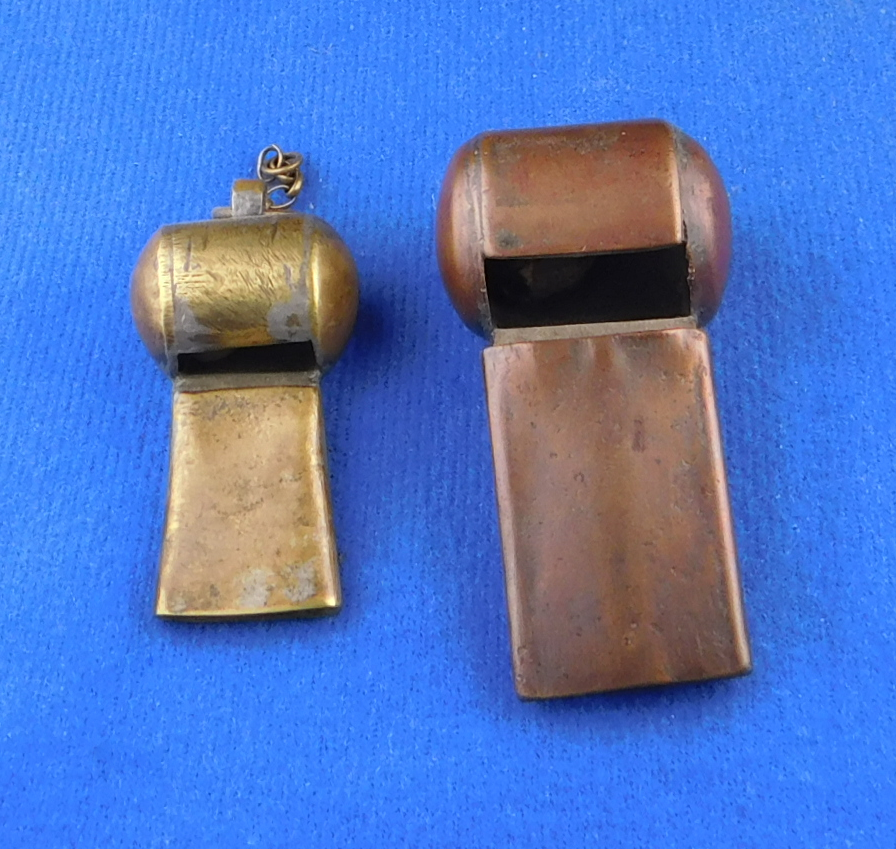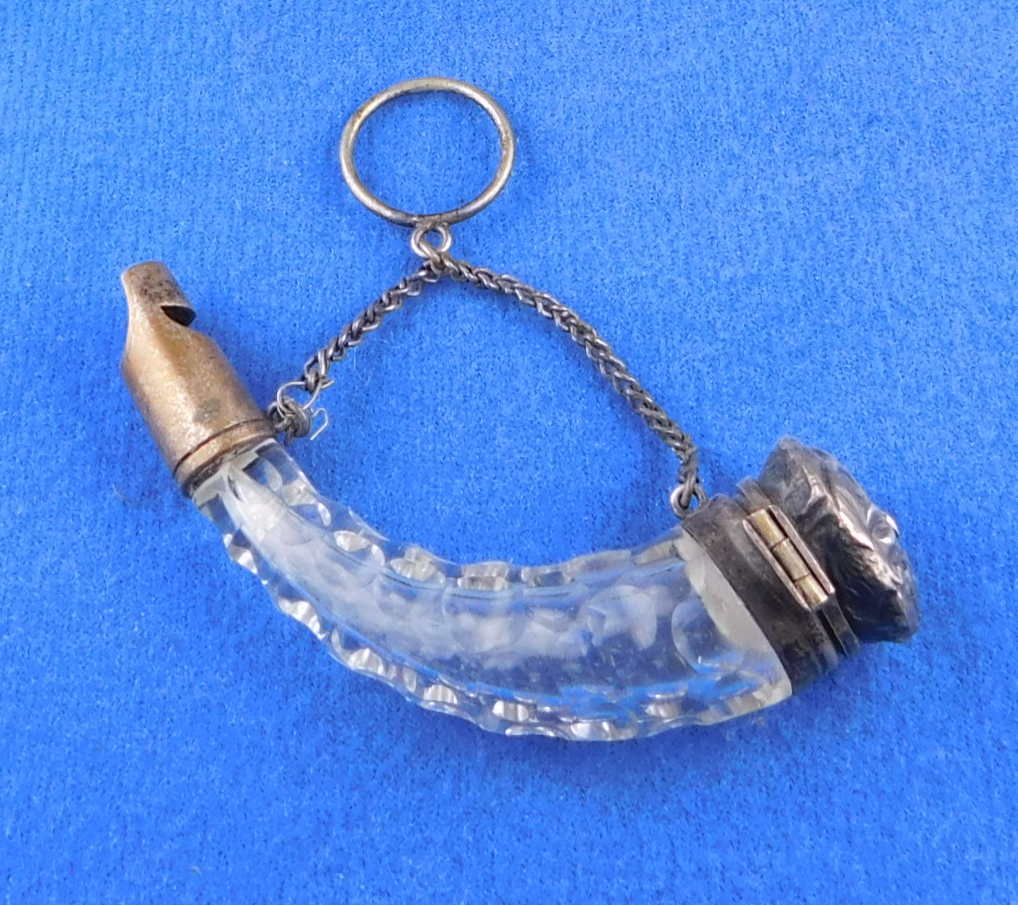Spotlight > By Whistle Category > Escargot Whistle Articles > 018 The Noisy Escargot
Whistory
The Noisy escargot is an unusual 4 piece whistle made up of the knop, two sides ( round like independent coins ) and one large piece which is made from the barrel and mouthpiece overlay. So rather than the top of the mouthpiece being separately attached – it is a fold over. This appears to be a DeCourcy patented design of 1905. Perhaps it was adapted, but in a several ways it varies from his accepted work.
What are the differences of The Noisy escargot and other escargots?
Typically, escargots are 6 piece, 5 piece and 3 piece. These four pieces requires a fold over of the mouthpiece, that DeCourcy pioneered.
Connecting Alfred DeCourcy in the Timeline to The Noisy Escargot
Tracking Alfred DeCourcy in the period from his leaving Hudson in 1888 to the startup of his Police Whistle Works (also ‘Thunderer’ Whistle Works) company with his brother in 1905 is sketchy. It appears that he was making four and five piece light weight escargots of the London type at Mary street for over a decade. He is listed as a whistle maker during this time.
Whistle Classification
| Category | escargot |
| Order | Alfred DeCourcy |
| Type | unknown |
| Class | brass |
| Sub class | four piece unknown |
Whistle Archeology
The Pivotal Year of 1905 for The Noisy Escargot
To begin for study purposes, we focus on the 1905 patent by Alfred DeCourcy, how much earlier he was making escargots is still needing more research.
Improvements in Railway and other Whistles and in the Manufacture of same.
| Page bookmark | GB190526019 (A) – Improvements in Railway and other Whistles and in the Manufacture of same. |
| Inventor(s): | COURCY ALFRED DE + (ALFRED DE COURCY) |
| Applicant(s): | COURCY ALFRED DE + (ALFRED DE COURCY) |
| Classification: | – international: – cooperative: |
| Application number: | GBD190526019 19051214 |
| Priority number(s): | GBT190526019 19051214 |
Abstract of GB190526019 (A)
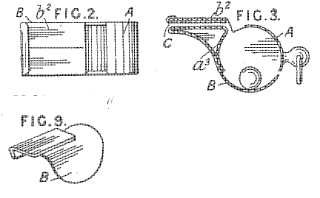
26,019. Courcy, A. de. Dec. 14. Making whistles. -A whistle is formed from four stamped pieces of metal. One piece A is first bent into the shape shown in Fig. 3, with a strengthening-strut a<3>, which may if necessary be absent, two side pieces B, Fig. 9, are then attached, and the pieces b<2> are folded over, forming with the piece C the top of the whistle.
Whistology
The mouthpiece upper tooth- grip is visibly different than commonly seen.
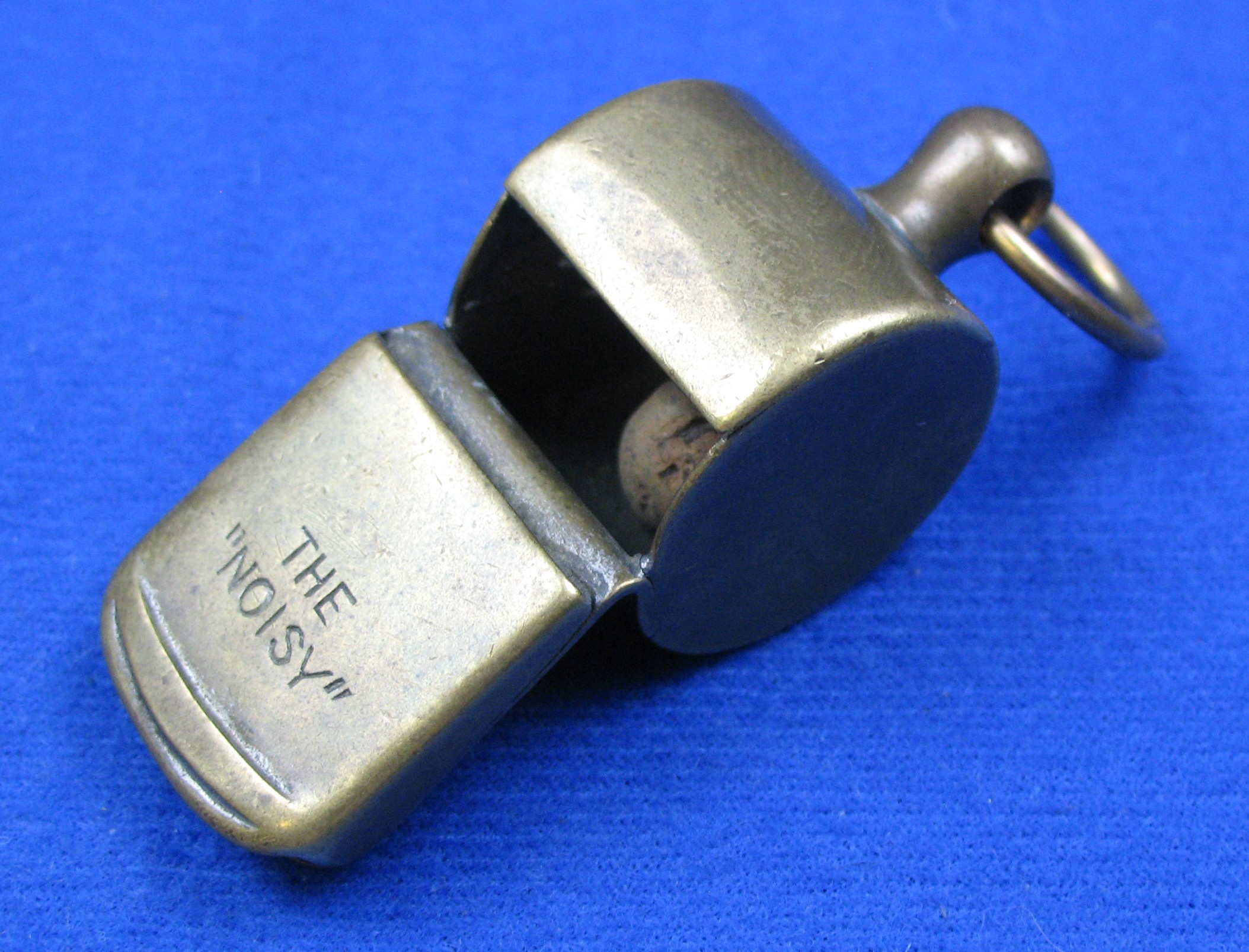
Note the sides and the attachment points of the mouthpiece which are openly independent rather than singular to one side as in the patent diagram.…
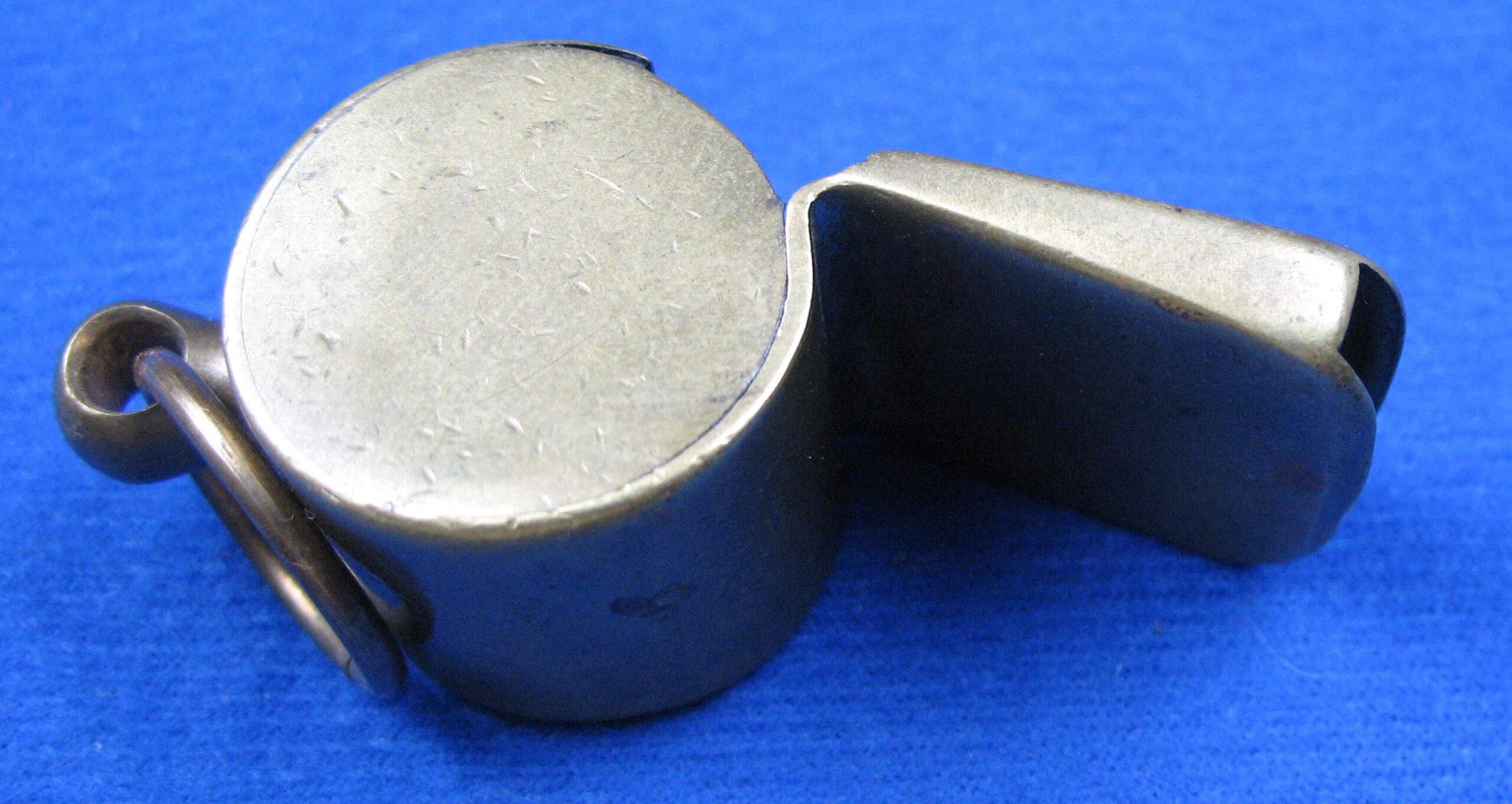
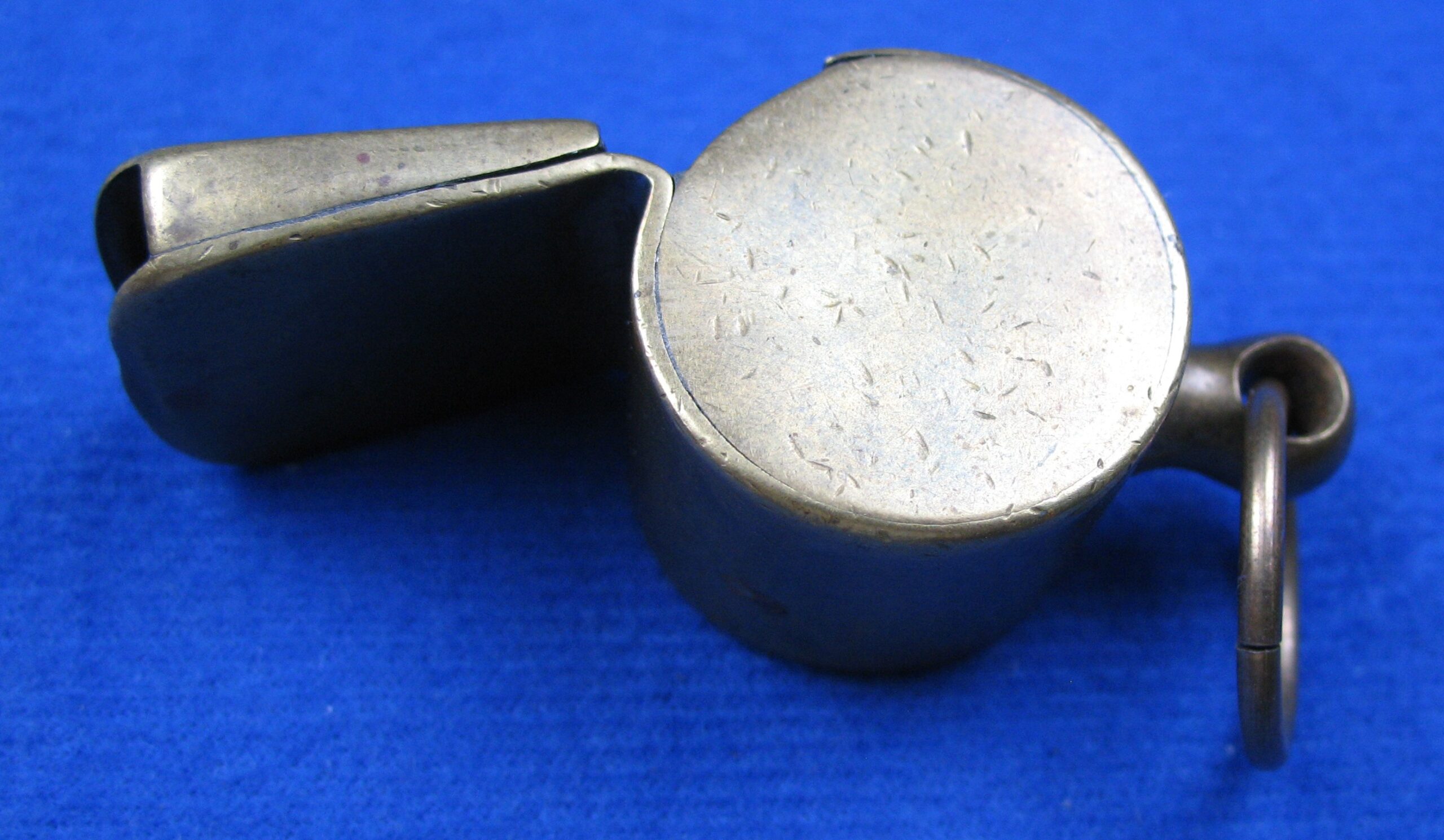
Note the picture on the left shows the fold over point and the right picture shows the actual attachment edge. This looks to be DeCourcy’s work.
The cast knop is very smooth and does not match any of his work.
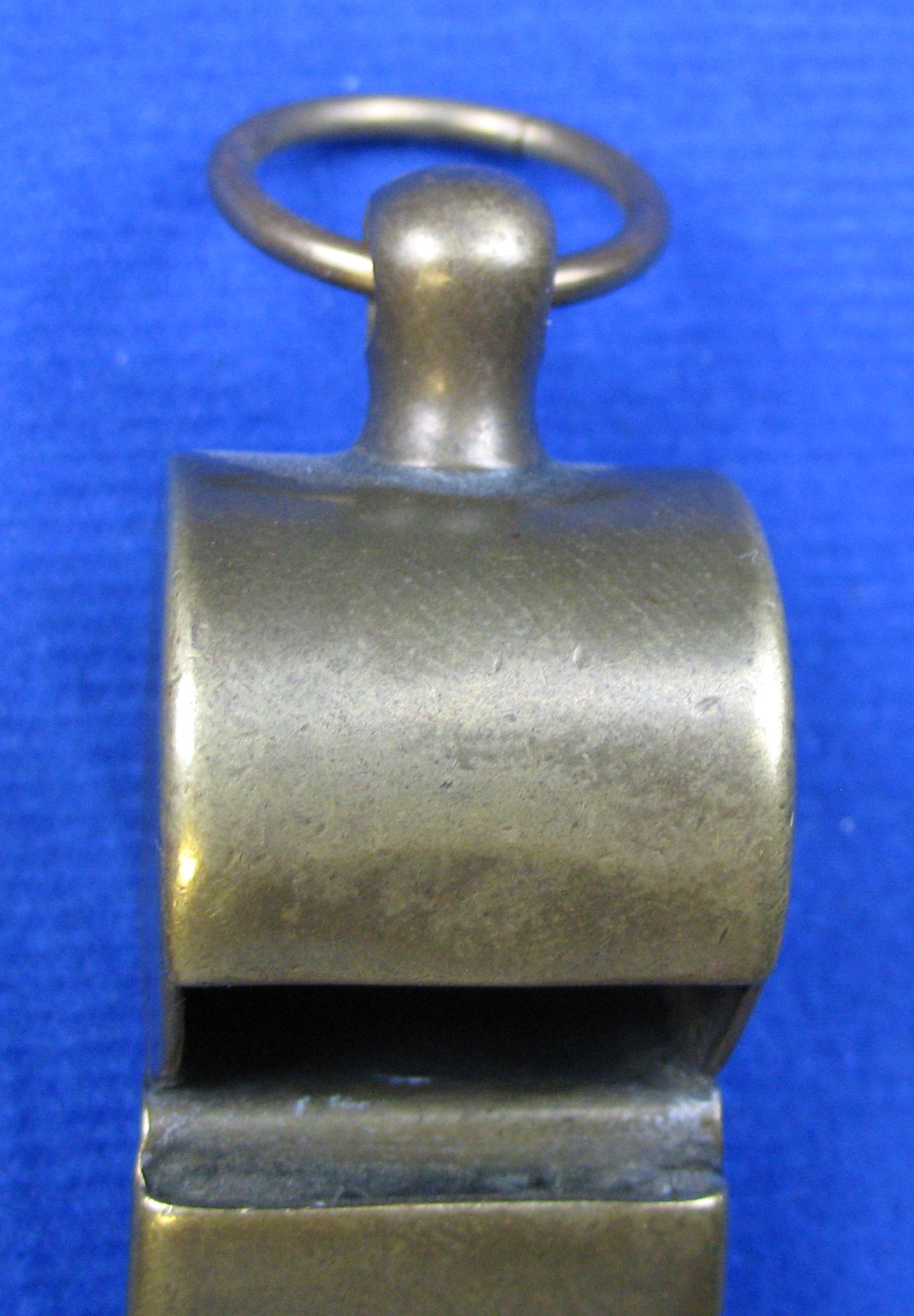
Of particular interest is the front tooth grip. It looks like a filed down edge but is not. It is unlike anything Alfred produced – even just after he left Hudson’s. The engraved words The Noisy with quotation marks is uncharacteristic for him. In fact, it is unusual for a UK whistle altogether.
It is more reminiscent of whistles from India from the 1940s. However, at that time India was still filing down the tooth-grips. No other escargots to date display this tooth-grip. At this time three other The “Noisy” whistles have been recorded, so it was indeed a production whistle.
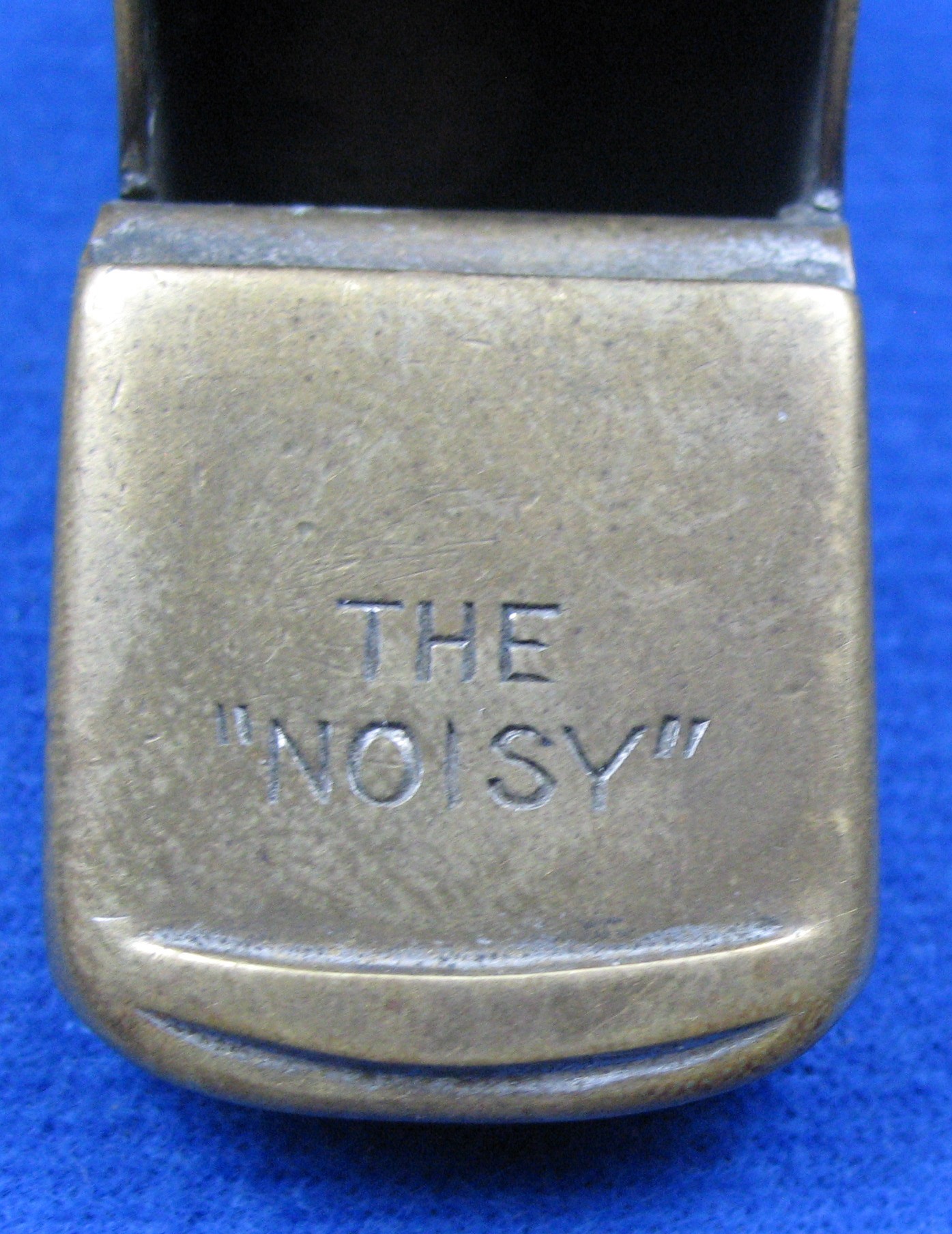
Now drop back to the first picture and you will see that the window is unusually large.
Conclusions:
A fold over escargot design that on the surface matches the 1905 DeCourcy patent. However, there are significant differences in the tooth grip, the knop and especially that the sides are independent discs, additionally the extra-large window.
TWG
Posted July 24, 2013
Revised September 6, 2020
Revised October 11, 2020
Revised February 12, 2021
Revised December 30, 2021
Revised February 19, 2022
Bibliography:
The Whistle Gallery reference collection
